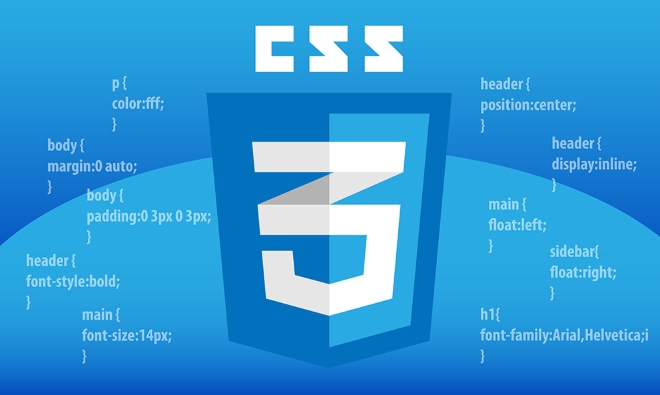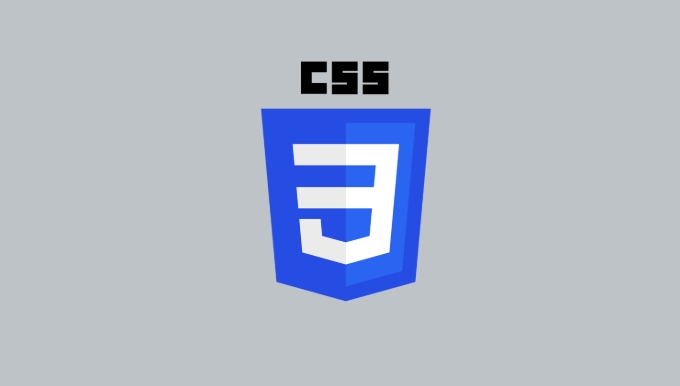The key to creating interlaced animation effects is to use animation-delay with:nth-child() or CSS custom attributes to achieve sequential delay playback of elements. 1. Use:nth-child() to manually set incremental animation-delay values for each list item to achieve entry one by one; 2. Use CSS custom attributes such as --i and --delay to dynamically control latency in HTML to improve maintainability; 3. Reverse interlacing effects can be calculated dynamically through calc(); 4. It is recommended that delay control be between 0.1s and 0.2s, use forwards to maintain the final state, and use transform or opacity to enhance visual effects. This method is suitable for responsive design and is easy to expand.

Creating a staggered animation effect with CSS means animating multiple elements in sequence, with a slight delay between each one—like a wave or ripple effect. This is commonly used for animated lists, hero sections, or loading sequences. Here's how to do it cleanly and effectively.

? Use animation-delay with :nth-child() or CSS Custom Properties
The key to a staggered effect is applying the same animation to multiple elements but offsetting the start time using animation-delay . You can do this manually with :nth-child() , or dynamically using CSS custom properties (variables).
Method 1: Manual Delays with :nth-child()
Assume you have a list of items:

<ul class="stagger-list"> <li>Item 1</li> <li>Item 2</li> <li>Item 3</li> <li>Item 4</li> <li>Item 5</li> </ul>
Apply a fade-in animation with increasing delays:
@keyframes fadeIn {
from {
opacity: 0;
transform: translateY(10px);
}
to {
opacity: 1;
transform: translateY(0);
}
}
.stagger-list li {
opacity: 0;
animation: fadeIn 0.5s ease forwards;
}
.stagger-list li:nth-child(1) { animation-delay: 0.1s; }
.stagger-list li:nth-child(2) { animation-delay: 0.2s; }
.stagger-list li:nth-child(3) { animation-delay: 0.3s; }
.stagger-list li:nth-child(4) { animation-delay: 0.4s; }
.stagger-list li:nth-child(5) { animation-delay: 0.5s; }This gives each item a progressively longer delay, creating a clean staggered entrance.

? You can use
transformfor more dynamic effects like scaling or sliding.
? Method 2: Dynamic Stagger with CSS Custom Properties
For more flexibility (especially with many items), use a CSS variable to calculate delay:
.stagger-list li {
--delay: calc(var(--i, 1) * 0.1s);
opacity: 0;
animation: fadeIn 0.5s ease forwards var(--delay);
} Then, set --i on each <li> in HTML:
<li style="--i: 1">Item 1</li> <li style="--i: 2">Item 2</li> <li style="--i: 3">Item 3</li> <li style="--i: 4">Item 4</li> <li style="--i: 5">Item 5</li>
Now you can easily change the timing multipler or reuse the pattern elsewhere.
?? Pro Tips
- <li> Keep the delay subtle : 0.1s to 0.2s between items usually looks smooth.<li> Use
forwards in animation-fill-mode so elements stay visible after animation.<li> Combine with opacity , transform , or even clip-path for creative effects.<li> For responsive layouts, consider reducing delay on mobile to avoid long waits.? Bonus: Reverse Stagger (Last to First)
Reverse the order by calculating from the end:
.stagger-list li {
--total: 5; /* total items */
--reverse-delay: calc((var(--total) - var(--i)) * 0.1s);
animation: fadeIn 0.5s ease forwards var(--reverse-delay);
}Now the last item animates first.
Basically, staggered animations are just about controlled timing . Whether you use :nth-child() or CSS variables, the idea is the same: offset each animation slightly . The second method scales better and is easier to manage in dynamic content.
Not complicated—just pay attention to the timing and easing to keep it smooth.
The above is the detailed content of How to create a staggered animation effect with CSS?. For more information, please follow other related articles on the PHP Chinese website!

Hot AI Tools

Undress AI Tool
Undress images for free

Undresser.AI Undress
AI-powered app for creating realistic nude photos

AI Clothes Remover
Online AI tool for removing clothes from photos.

Clothoff.io
AI clothes remover

Video Face Swap
Swap faces in any video effortlessly with our completely free AI face swap tool!

Hot Article

Hot Tools

Notepad++7.3.1
Easy-to-use and free code editor

SublimeText3 Chinese version
Chinese version, very easy to use

Zend Studio 13.0.1
Powerful PHP integrated development environment

Dreamweaver CS6
Visual web development tools

SublimeText3 Mac version
God-level code editing software (SublimeText3)
 CSS tutorial for creating loading spinners and animations
Jul 07, 2025 am 12:07 AM
CSS tutorial for creating loading spinners and animations
Jul 07, 2025 am 12:07 AM
There are three ways to create a CSS loading rotator: 1. Use the basic rotator of borders to achieve simple animation through HTML and CSS; 2. Use a custom rotator of multiple points to achieve the jump effect through different delay times; 3. Add a rotator in the button and switch classes through JavaScript to display the loading status. Each approach emphasizes the importance of design details such as color, size, accessibility and performance optimization to enhance the user experience.
 Addressing CSS Browser Compatibility issues and prefixes
Jul 07, 2025 am 01:44 AM
Addressing CSS Browser Compatibility issues and prefixes
Jul 07, 2025 am 01:44 AM
To deal with CSS browser compatibility and prefix issues, you need to understand the differences in browser support and use vendor prefixes reasonably. 1. Understand common problems such as Flexbox and Grid support, position:sticky invalid, and animation performance is different; 2. Check CanIuse confirmation feature support status; 3. Correctly use -webkit-, -moz-, -ms-, -o- and other manufacturer prefixes; 4. It is recommended to use Autoprefixer to automatically add prefixes; 5. Install PostCSS and configure browserslist to specify the target browser; 6. Automatically handle compatibility during construction; 7. Modernizr detection features can be used for old projects; 8. No need to pursue consistency of all browsers,
 What is the difference between display: inline, display: block, and display: inline-block?
Jul 11, 2025 am 03:25 AM
What is the difference between display: inline, display: block, and display: inline-block?
Jul 11, 2025 am 03:25 AM
Themaindifferencesbetweendisplay:inline,block,andinline-blockinHTML/CSSarelayoutbehavior,spaceusage,andstylingcontrol.1.Inlineelementsflowwithtext,don’tstartonnewlines,ignorewidth/height,andonlyapplyhorizontalpadding/margins—idealforinlinetextstyling
 Creating custom shapes with css clip-path
Jul 09, 2025 am 01:29 AM
Creating custom shapes with css clip-path
Jul 09, 2025 am 01:29 AM
Use the clip-path attribute of CSS to crop elements into custom shapes, such as triangles, circular notches, polygons, etc., without relying on pictures or SVGs. Its advantages include: 1. Supports a variety of basic shapes such as circle, ellipse, polygon, etc.; 2. Responsive adjustment and adaptable to mobile terminals; 3. Easy to animation, and can be combined with hover or JavaScript to achieve dynamic effects; 4. It does not affect the layout flow, and only crops the display area. Common usages are such as circular clip-path:circle (50pxatcenter) and triangle clip-path:polygon (50%0%, 100 0%, 0 0%). Notice
 Styling visited links differently with CSS
Jul 11, 2025 am 03:26 AM
Styling visited links differently with CSS
Jul 11, 2025 am 03:26 AM
Setting the style of links you have visited can improve the user experience, especially in content-intensive websites to help users navigate better. 1. Use CSS's: visited pseudo-class to define the style of the visited link, such as color changes; 2. Note that the browser only allows modification of some attributes due to privacy restrictions; 3. The color selection should be coordinated with the overall style to avoid abruptness; 4. The mobile terminal may not display this effect, and it is recommended to combine it with other visual prompts such as icon auxiliary logos.
 How to create responsive images using CSS?
Jul 15, 2025 am 01:10 AM
How to create responsive images using CSS?
Jul 15, 2025 am 01:10 AM
To create responsive images using CSS, it can be mainly achieved through the following methods: 1. Use max-width:100% and height:auto to allow the image to adapt to the container width while maintaining the proportion; 2. Use HTML's srcset and sizes attributes to intelligently load the image sources adapted to different screens; 3. Use object-fit and object-position to control image cropping and focus display. Together, these methods ensure that the images are presented clearly and beautifully on different devices.
 Demystifying CSS Units: px, em, rem, vw, vh comparisons
Jul 08, 2025 am 02:16 AM
Demystifying CSS Units: px, em, rem, vw, vh comparisons
Jul 08, 2025 am 02:16 AM
The choice of CSS units depends on design requirements and responsive requirements. 1.px is used for fixed size, suitable for precise control but lack of elasticity; 2.em is a relative unit, which is easily caused by the influence of the parent element, while rem is more stable based on the root element and is suitable for global scaling; 3.vw/vh is based on the viewport size, suitable for responsive design, but attention should be paid to the performance under extreme screens; 4. When choosing, it should be determined based on whether responsive adjustments, element hierarchy relationships and viewport dependence. Reasonable use can improve layout flexibility and maintenance.
 What are common CSS browser inconsistencies?
Jul 26, 2025 am 07:04 AM
What are common CSS browser inconsistencies?
Jul 26, 2025 am 07:04 AM
Different browsers have differences in CSS parsing, resulting in inconsistent display effects, mainly including the default style difference, box model calculation method, Flexbox and Grid layout support level, and inconsistent behavior of certain CSS attributes. 1. The default style processing is inconsistent. The solution is to use CSSReset or Normalize.css to unify the initial style; 2. The box model calculation method of the old version of IE is different. It is recommended to use box-sizing:border-box in a unified manner; 3. Flexbox and Grid perform differently in edge cases or in old versions. More tests and use Autoprefixer; 4. Some CSS attribute behaviors are inconsistent. CanIuse must be consulted and downgraded.






